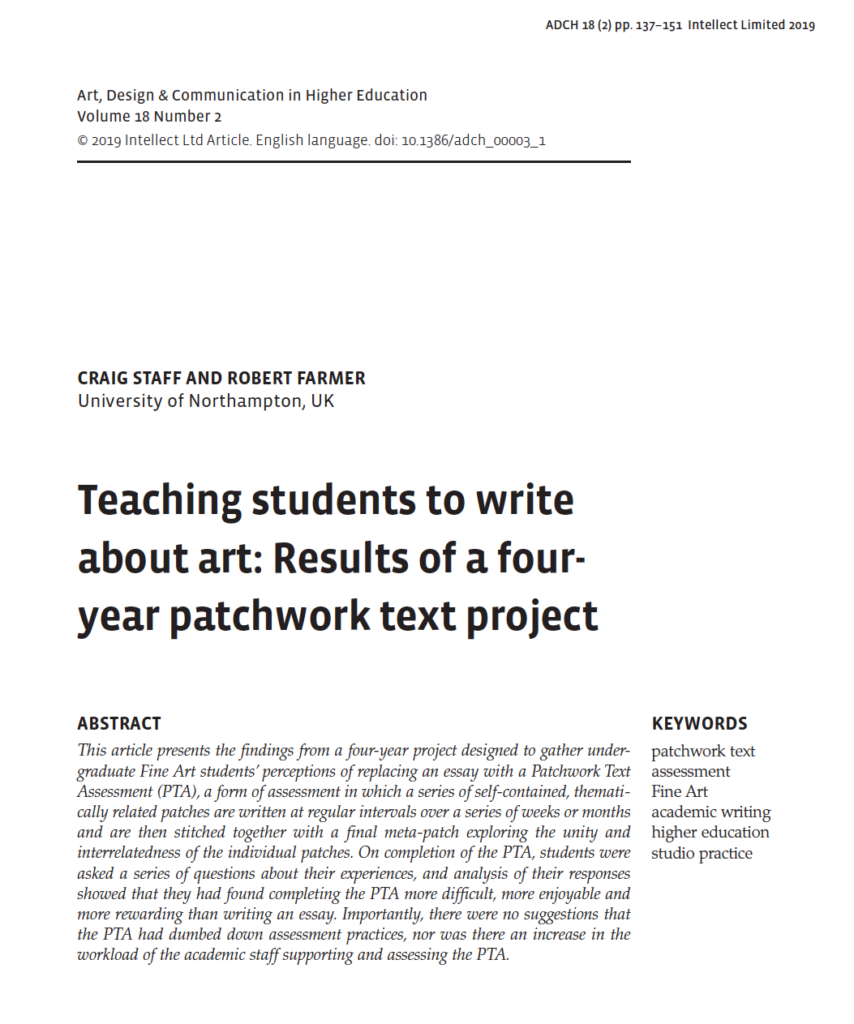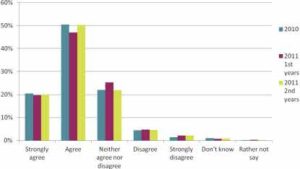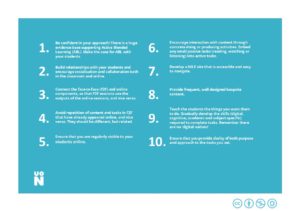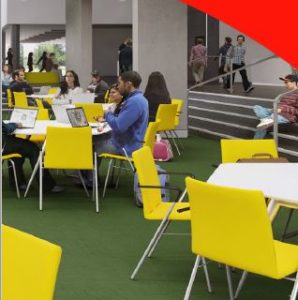Rob Lambert, Senior Lecturer and Programme Leader for BA Games Design, FAST.
Presentation at: Teaching and supporting a digital future: UoN Showcase 4th February 2022
A dive into the experience of producing a commercial learning product:
3D Gamified training simulation tool for the National Fire Chiefs Council which will educate UK business owners around the laws, protocols and proper conduct relating to fire safety within their premises.
⦁ Getting the project going.
⦁ How we hope to measure the impact of the learning tool.
⦁ How we first intended to gamify learning, how we now intend to gamify learning.
⦁ Production management: Challenges, Milestones and progress, Working with a team of Graduates (925 Studios).
⦁ What may be next?
The recording of the event is available to view
Alison Power, Associate Professor (Learning and Teaching), Senior Lecturer in Midwifery, FHES
Demystifying the Digital World: supporting midwifery students to develop digital competence and confidence
Presentation at: Teaching and supporting a digital future: UoN Showcase 4th February 2022
To meet Professional Standards for pre-registration midwifery education, ‘technology-enhanced [and simulated] learning opportunities’ (NMC, 2019a:10) are embedded in the curriculum in a first-year module which aims to develop students’ digital and technological literacy.
At the start of the module students undertake self-assessments of digital competency using three online platforms (UoN’s Virtual Learning Environment (VLE), the NHS IT Skills Pathway ‘Digital Learning Solutions’ (DLS) and the JISC ‘Building Digital Capability’ website) to identify their digital learning needs. All three platforms then offer a suite of e-learning packages for students to complete, targeting their areas for development. The module is largely delivered online and uses a range of innovative and dynamic learning and teaching approaches for students to engage with both synchronously and asynchronously.
The first cohort to complete the module were asked about their experiences via an online survey and all respondents agreed that the module had been successful in its aim of developing their digital confidence and competence.
The recording of the event is available to view
Dr Craig Staff, Reader in Fine Art, and Robert Farmer, Learning Technology Manager, have published an article in the latest edition of Art, Design and Communication in Higher Education, a special edition on the theme of democratizing knowledge in art and design education. According to the journal’s editor, Professor Susan Orr, Dean of Learning/Teaching & Enhancement at University of the Arts London “The authors make a strong argument that the patchwork text approach works well within a creative education context, where experimentation and risk-taking are valued.”
The article itself presents the findings from a four-year project designed to gather undergraduate Fine Art students’ perceptions of replacing an essay with a Patchwork Text Assessment (PTA), a form of assessment in which a series of self-contained, thematically related patches are written at regular intervals over a series of weeks or months and are then stitched together with a final meta-patch exploring the unity and interrelatedness of the individual patches.
On completion of the PTA, students were asked a series of questions about their experiences, and analysis of their responses showed that they had found completing the PTA more difficult, more enjoyable and more rewarding than writing an essay. Importantly, there were no suggestions that the PTA had dumbed down assessment practices, nor was there an increase in the workload of the academic staff supporting and assessing the PTA.
The full article can be viewed and downloaded here: https://doi.org/10.1386/adch_00003_1

[Post published on behalf of Ale Armellini]
The purpose of this paper is to introduce an evidence-based, transferable framework of graduate attributes and associated university toolkit to support the writing of level-appropriate learning outcomes aligned to Active Blended Learning (ABL), Northampton’s approach to learning and teaching. An iterative process of co-design and co-development was employed to produce both the framework and the associated learning outcomes toolkit. There is tangible benefit in adopting an integrated framework aligned to the principles of ABL, which enables students to develop personal literacy and graduate identity. The toolkit enables staff to write assessable learning outcomes that support student progression and enable achievement of the framework objectives. Embedding the institutional Changemaker attributes alongside the agreed employability skills enables students to develop and articulate specifically what it means to be a “Northampton graduate”. The uniqueness of this project is the student-centred framework and the combination of curricular, extra- and co-curricular initiatives that provide a consistent language around employability across disciplines. This is achieved through use of the learning outcomes toolkit to scaffold student progression.
See the full paper on the framework of graduate attributes and ABL
Keywords: Active blended learning, ChANGE, COGS, Employability and entrepreneurship, Graduate identity, Personal literacy, Active Blended Learning, ABL.
Written by Jim Lusted, Learning Designer
I recently attended a workshop hosted by Northampton Students’ Union (SU) and facilitated by the National Union of Students (NUS) where SU staff, academics and student representatives were introduced to a project called the ‘Greener Curriculum’. This is certainly a more catchy title than the more commonly used term Education for Sustainable Development – shortened to ESD – which represents an area of activity gaining increasing prominence across the HE sector.
What is sustainability?
At the start of the workshop we were asked to define ‘sustainability’. Most of us immediately came up with environmental issues  such as recycling, creating less waste, energy efficiency and so on, but we were also encouraged to consider the social and economic aspects of sustainability that we might not immediately recognise. This makes up what has been termed the ‘3 pillars’ of sustainability, or the ‘triple bottom line’ of people, planet and profit.
such as recycling, creating less waste, energy efficiency and so on, but we were also encouraged to consider the social and economic aspects of sustainability that we might not immediately recognise. This makes up what has been termed the ‘3 pillars’ of sustainability, or the ‘triple bottom line’ of people, planet and profit.
This holistic approach is reflected in the United Nations’ 17 Sustainable Development Goals that were adopted in 2015 to commit nation states to take action not only on high profile ‘green’ issues like climate change, but also concerns such as social equality, poverty, protecting life (human and non-human), and ensuring a quality education for all.
Education and sustainability
These are all unarguably worthy causes, but what role might universities play in promoting sustainability? The workshop asked us to consider this in relation to our own circumstances at Northampton. The NUS defines ESD as ‘education that aims to give students the knowledge and skills to live and work sustainably’, and their vision behind ESD is to ensure students leave higher education being part of the solution rather than the problem when it comes to tackling some of the big issues mentioned above.
The NUS have commissioned research that shows that two thirds of students want to have sustainability issues embedded into their programmes:
“Sustainable development is something universities should actively incorporate and promote.”
(NUS 2018)
Students want to engage with the big challenges of our times through their studies – be it environmental, social or economic – and they want to explore ways they positively influence the world around them.
Education for sustainable development @ University of Northampton
As the workshop progressed, many of the participants noted the apparent similarities between the guiding principles of ESD and the ideals that underpin Northampton’s status as an AshokaU ‘Changemaker’ campus. Indeed, one of the manifesto commitments of a Changemaker campus refers explicitly to sustainability:
“Operating in socially and environmentally conscious ways to model changemaking for students and other institutions and contribute to the vitality of people and the planet”
We felt that Northampton might be particularly well suited to embedding ESD into the curriculum when channelled explicitly through the Changemaker agenda. This academic year, as part of the UMF assessment review, all modules have been required to articulate revised learning outcomes, including some directly attributed to Changemaker values. This gives teaching staff a real chance to reflect on how they are embedding such values into their curriculum and where they are providing students with opportunities to explore some core principles of sustainability in their studies.
Embedding ESD in the curriculum – some ideas
We were given a number of useful resources and tips during the workshop to help consider how and where ESD could be embedded into teaching practice and curricula. Firstly, although some courses may be more aligned to ESD principles than others, like the social sciences (indeed, courses like Geography are likely to have sustainability as a core topic), we were encouraged to consider how every subject has the potential to include ESD perspectives. A really useful A-Z guide, called #sustainabilityAtoZ has been produced by the NUS to showcase examples across the breadth of academic disciplines where ESD has been embedded into programmes. Similarly, a website called www.dissertationsforgood.org.uk has recently been set up by the NUS as an attempt to try to bring together dissertation students with local and national organisations – with a view to creating dissertation topics and projects that can have a direct impact on the ‘real world’.
The future for ESD
It seems like many of the big issues facing the HE sector at the moment – debates about ‘value for money’, student satisfaction, graduate employment and so on – lend themselves to ESD being given ever higher profile in future higher education policy and curriculum design. Our workshop discussed several examples of universities across England who had undertaken big reviews of their own university wide curricula (much like our UMF review) to better align graduate attributes and skills more closely to ESD principles such as social responsibility and impact. With all this in mind, I expect we will be hearing much more about the idea of a ‘greener curriculum’. I personally really welcome the renewed interest developing a social conscience among students through their studies, and at Northampton in particular I see a real opportunity for us to creatively explore the ways in which ESD values can help bring the ‘Changemaker’ agenda into our teaching at the University.
Authors: Elizabeth Palmer, (University of Northampton, Learning Designer,) Sylvie Lomer, (University of Manchester, Lecturer in Education) and Ivelina Bashliyska (3rd Year Undergraduate Student and Assistant Researcher).
With thanks to Nadine Shambrooke and David Cousens for support with transcription and coding.
______________________________________________________________________
The University of Northampton has taken an institutional approach to learning and teaching through the widespread adoption of Active Blended Learning (ABL) as its new ‘normal’. To find out more please visit: https://www.northampton.ac.uk/ilt/current-projects/waterside-readiness/
However, student engagement has been highly variable, which has created a number of challenges for staff. Semi-structured qualitative focus groups have been undertaken with 201 undergraduate students across all the year groups and faculties during the academic year 16/17 based on a pilot study of 24 students in academic year 15/16. These focus groups have been looking at trying to uncover the students own perceptions and experiences of ABL in order to unpick the reasons behind varying patterns and engagements and to glean student insight into the factors that inhibit or encourage engagement with ABL.
The study has revealed a number of key factors which students identify as having significant impact on their engagement. Key success factors include effective pedagogical design, in particular establishing a clear and explicit relationship between online and face to face components of modules, and scaffolding the development of digital skills and literacies in the process of establishing online tasks. A strong relationship between staff and students is also critical, where students trust in the decisions and motivations of staff. This is signalled by following up on online tasks, providing feedback where relevant, and explicitly discussing the value of online tasks to module learning outcomes and employability skills. A key finding is that students’ conceptions of learning, teaching & knowledge impact on their engagement with ABL, and are not necessarily compatible with ABL principles. These factors are complex, interdependent and have varying loci of control. Staff can take a number of measures to increase the likelihood of student engagement, although certain factors remain ultimately within the agency of students. Understanding these issues is critical to the success of ABL.
The following artefacts provide the results of the study to date:
Read the Interim Report from the Main Study here:
For Ten Top Tips on how to design ABL to maximise student engagement:
Read the Pilot Study Report here:
The Quick Overview:
• Where students need to carry out online surveys, and where academic staff do not have a preference as to which tool the students use, we recommend eSurv: http://esurv.org
• A tutorial video explaining how to use eSurv is also available here: http://bit.ly/esurv-tutorial
One area where students sometimes come unstuck with their research projects is when they try to extract data from the free online survey tool they have used. While it is often easy to create a simple online survey for free, and easy for a limited number of respondents to take part in the survey, it is not always so easy for the researcher to access their data.
There are a large number of free online survey tools available for use, and choosing the most appropriate one is not always easy. In almost all cases, accessing the full-functionality of the survey tool is not free. For example, the free version of the survey tool may be limited by number and type of questions available (a maximum of ten questions, for example, and only basic questions). It may also be limited to a maximum number of responses (fifty responses per survey, for example). Another common restriction is to limit access to the survey data, and not to allow the researcher to download the data for analysis in a statistical package. While all these restrictions can be overcome by paying a monthly subscription to the survey tool provider, students often feel rather cheated when they find out that it will cost them, in some cases, £60 to download their data for analysis in SPSS. They often feel especially annoyed when they find out that if they chosen different tool they could have had free access to their data.
As part of a recent University of Northampton URB@N project, Paul Rice, Phil Oakman, Clive Howe and Rob Farmer decided to find out whether there was a genuinely free online survey tool out there somewhere. And they decided to make things more difficult by trying to find one that was also easy to use and that stored data in a way that was compliant with the UK Data Protection Act. The good news is that they found one!
If you would like to find out more then you can read all about it in their paper published in the journal MSOR Connections: https://journals.gre.ac.uk/index.php/msor/article/view/311
by Robert Farmer and Paul Rice
It’s no easy thing to create an interesting, engaging and effective educational video. However, when developing educational presentations and videos there are some straightforward principles that you can apply which are likely to make them more effective.
The following videos were created for our course, Creating Effective Educational Videos, and will take you through the dos and dont’s of educational video-making.
1. How not to do it!
This short video offers a humorous take on how not to make great educational videos.
- Prof. Oliver Deer discusses his approach to making educational videos: https://youtu.be/cKXx9GkeGGQ
2. Understanding Mayer’s multimedia principles
This 20 minute video outlines Richard Mayer‘s principles of multimedia learning and provides practical examples of how these principles might be applied in practice to create more effective educational videos.
- A Practical Guide to Mayer’s Multimedia Principles: https://youtu.be/m0GMZgaC7gM
3. Applying Mayer’s mutimedia principles
Because much of Mayer’s work centres around STEM subjects (which typically make a lot of use of diagrams, charts, tables, equations, etc.) We spent some time thinking about how to apply his principles in subjects which are more text based. To this end, we recorded a 12 minute video lecture which is very on-screen text heavy in which we tried to make use of as many of Mayer’s principles as possible.
- Are we ever justified in silencing those with whom we disagree? https://youtu.be/Dyu94dH2aeo
4. Understanding what students want, and don’t want, from an educational video
Given the current popularity of educational videos, and given the time, effort and expense academics and institutions are investing to provide educational videos to students, we thought that it was worthwhile to evaluate whether students actually want and use these resources. You can find the results of our investigation in our paper:
- Rice, P. and Farmer, R. (2016) Educational videos – tell me what you want, what you really, really want. Journal of Learning Development in Higher Education, Issue 10, November 2016. Available from: https://journal.aldinhe.ac.uk/index.php/jldhe/article/view/297
5. Further reading
Mayer, R. (2009) Multimedia Learning, 2nd Edition. Cambridge University Press.
https://www.cambridge.org/gb/academic/subjects/psychology/educational-psychology/multimedia-learning-2nd-edition
Rice, P., Beeson, P. and Blackmore-Wright, J. (2019) Evaluating the Impact of a Quiz Question within an Educational Video. TechTrends, Volume 63, pp.522–532.
https://doi.org/10.1007/s11528-019-00374-6
Background to the Exchange
Aside from the opportunity to network, my aims in attending the exchange was to examine two main areas – how technology can support the process of innovation and the potential for incorporating System Thinking and Design Thinking into the design of material and even courses. This document summarises my experience and the four lessons I have learned.
Technology and Innovation
Two items on the agenda were particularly relevant here. The MICA Social Design Lab ran during one afternoon – this was a social space designed to encourage interaction between delegates and facilitate discussions, given the question ‘How might we advance social innovation in Higher Education?’
Given the rather spartan conference room environment, the range of fun, brightly coloured physical items to record, connect and visualise responses was attractive and facilitators easy to identify. But while idea capture was strong, collection and dissemination was somewhat weaker. Personally, I never encountered any analysis or results from it, though it may have just passed me by. The physical location hampered the exercise too – delegates could too easily pass by and without their physical presence the exercise was reduced in value. Could technology have supported this process better? Yes, I am convinced it could. At the very least, video or photographic capture needs to be on hand to ensure that contributions can still provoke ideas and actions after the event, along with a clear mechanisim to access it. Ultimately, technologies to engage participants, then capture and disseminate material are essential features of an environment that truly wishes to engage stakeholders. How often has a pile of flip chart paper – containing several person hours of contributions at enormous cost – lingered in the corner of my office?
Lesson #1: Low tech is fun and has its place, but technology to engage in, capture and share group deliberation is essential if the exercise is to make a real difference in a design process.
I attended a session entitled ‘Are we succeeding and how would we know?’, where three case studies were discussing in respect of their attempts to measure success. Drew Bewick of the University of Maryland discussed the use of a ‘Return on Engagement’ grid – very much along the lines of a rubric – to measure the operational value, strategic value and risks of projects on a scale of one to five, and recording the resources used, activities, outputs and impact at the same time.
Lizzie Pollock, from Brown University, discussed the measurement of the learning outcomes for individuals being assessed as part of their Social Innovation Fellowship. The items for inclusion included empathy, creative thinking, critical thinking and entrepreneurial ‘grit’. She was still struggling with ways to evidence and measure these attributes – the Torrance Test, for example, was tried, but rejected on the grounds that it was too broad. Brown are also now beginning to consider – like Maryland – impact, including enterprise survival rates and generated revenue.
John Isham, of Middle bury College, had done some interesting work on the three impact areas of the project itself, the student(s) concerned and the Campus, emphasising the inter-relation of all three. He identified a weakness in project management skills amongst participants in projects and was conscious that just ‘building stuff’ is an inadequate measure of success. Students were beginning to be involved with evaluating other students’ projects but this was at a fairly early stage.
Two points struck me here in particular – the lack of pre-determined project management structures or tools can be a barrier both for students who have little or no experience of managing a project and supervisors who have no ‘dashboard’ view of the progress of a project or its outcomes. Secondly, we seem locked into a ‘new year, fresh start’ approach to developing social innovation projects and ignore the lessons of the previous year.
Lesson #2: A project management system – simple and free to use – is needed to support students and their mentors/supervisors/assessors.
Lesson #3: Evaluation of previous social innovation ventures by students before they start their own, would be a valuable learning experience for them and provide data for the hosting institution.
Systems and Design Thinking
Unfortunately, both sessions related to these topics – ‘Systems Thinking for Leading Changemakers’ and ‘Can Everyone be a Designer? ‘Provocations in the Pedagogy of Design Thinking’ failed to fully deliver to my expectations, the latter being a discussion about a process I didn’t understand! Mary Anne Gobble’s summary article (Gobble 2014) has assisted me to a great extent on the topic of Design Thinking. Whether you believe this to be fad or fact, the importance of taking the “beneficiary’s” perspective into account during the design phase of any social innovation would seem to be a critical success factor.
Lesson #4: Empathy is not just a desirable personal attribute; it is a critical success factor in the design process.
Systems Thinking seems to sit uncomfortably in social innovation design, being apparently more suited to translating the messiness of real life into computer software. However, there are clear connections here to the knotty problem of measuring success – by establishing the ‘units’ that exist within a process flow and their rates of change (along with auxiliary variables) we can begin to pinpoint objective measure of success. Overall, I couldn’t see how a non-specialist could apply these techniques easily, though David Castro did provide some interesting resources and links (including free modeling tools such as InsightMaker) that I may well do some more exploration with.
Summary
Clearly there was a lot more that I got out of the visit, some of which are on http://ashokaun15.weebly.com/. I have an excellent contact in Waterloo, Canada who is sharing her experience of embedding Flipboard into teaching with me, along with the Tophat student response system and met a wide range of contacts from around the world. Many of the delegates leave you speechless at the problems they are seeking to overcome and the relentless enthusiasm they still have to press on. Wrangling with a few NILE issues pales into insignificance when trying to develop a system to support 100,000 students in Indian rural schools with no Internet connection!
But as Wray Irwin pointed out before I left, you would be surprised just how far ahead we are in the field of social innovation compared with most. Developing the support infrastructure for prospective social innovators and evaluating our successes and failures more effectively will push us ahead further still.
References
Gobble, MM. (2014). ‘Design Thinking’, Research Technology Management, 57(3), pp. 59-61
Acknowledgements
Many thanks to Tim Curtis for inviting me to attend, Rob Howe and Chris Powis for allowing me to go and the ‘awesome’ support of my fellow delegates in Washington.
(a copy of the fully hyper-text linked version of this document can be found at http://1drv.ms/1FEGoad)
 Student perceptions of their learning and engagement in response to the use of a continuous e-assessment in an undergraduate module.
Student perceptions of their learning and engagement in response to the use of a continuous e-assessment in an undergraduate module.
Naomi Holmes, School of Science and Technology
Dr. Naomi Holmes (School of Science and Technology) undertook the use of low-stakes continuous weekly summative e-assessment with a cohort of level 5 (2nd year) students. Biggs and Tang (2011) state that it is assessment and not the curriculum that determines how and what students learn. Learning needs to be aligned with assessment as much as possible to increase engagement, even if the result is that the student is “learning for the assessment”, and therefore accreditation. With this in mind the use of low-stakes weekly assessments was undertaken to help support learning (formative), and lead to accreditation (summative). Results show that both physical and virtual engagement with this (optional) module, and students’ learning and understanding of the subject increased because of this method of assessment.
Recent Posts
- Spotlight on Excellence: Bringing AI Conversations into Management Learning
- Blackboard Upgrade – December 2025
- Preparing for your Physiotherapy Apprenticeship Programme (PREP-PAP) by Fiona Barrett and Anna Smith
- Blackboard Upgrade – November 2025
- Fix Your Content Day 2025
- Blackboard Upgrade – October 2025
- Blackboard Upgrade – September 2025
- The potential student benefits of staying engaged with learning and teaching material
- LearnTech Symposium 2025
- Blackboard Upgrade – August 2025
Tags
ABL Practitioner Stories Academic Skills Accessibility Active Blended Learning (ABL) ADE AI Artificial Intelligence Assessment Design Assessment Tools Blackboard Blackboard Learn Blackboard Upgrade Blended Learning Blogs CAIeRO Collaborate Collaboration Distance Learning Feedback FHES Flipped Learning iNorthampton iPad Kaltura Learner Experience MALT Mobile Newsletter NILE NILE Ultra Outside the box Panopto Presentations Quality Reflection SHED Submitting and Grading Electronically (SaGE) Turnitin Ultra Ultra Upgrade Update Updates Video Waterside XerteArchives
Site Admin








